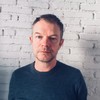"Dippers" seized by police in Los Angeles. Photo: LA Impact
Those suspected of using the drug were treated as unhinged, out of control, and potentially lethal. Even though scientists cast doubt on PCP’s ability to engender violence, others have said PCP can produce psychosis and severe hyperthermia, which may cause violent and bizarre behaviour, including disrobing and running about. But like the hoary old stories from over a century ago about Black people on cocaine being impervious to bullets, the “deranged” PCP user was weaponised by the authorities and the media.One of the key lines of defence used by police officers filmed pulverising Rodney King with batons in 1991 in footage that sparked the LA Riots was their fear he had “superhuman strength” from being high on PCP. King didn’t test positive for the drug, but its reputation served as an excuse for their barbaric show of force.“We had a saying at Bellevue in the psych ER and toxicology program: ‘Naked running is PCP until proven otherwise’.”
Gaffney said the reason for DC’s vibrant market is most likely down to its particular underworld connections: “The influence and control of the drug by long-established traffickers in the city could be keeping the drug prevalent,” she says.“It’s a hanging out with friends drug, like having a few beers.”
One of Alex's "dippers". Photo: Supplied
“It’s prevalent in lower-economic neighbourhoods, Black, hispanic and white,” he explains. “I think one of the problems is that it's relatively cheap. And when you're out of work it's not a tremendous cash outlet.” Since the start of the pandemic, according to Conklin, there has been a surge in incidents of public disrobing and other bizarre behaviour, in which the perpetrators have admitted to using PCP.“PCP is very popular in the projects and the hood, but it's not really easy to come by. It's sort of secretive. It isn't openly offered on the street like other drugs.”
Bottles of liquid PCP smuggled inside cans seized by police in Los Angeles. Photo: LA Impact
The supply of PCP is clunky and reliant on old school trafficking networks. It needs to be produced in a lab from dangerous precursor chemicals such as ether and potassium cyanide, and then transported, as a noxious liquid, around the country. Its supply is nowhere near as efficient, easy or widespread as other street drugs such as cocaine, heroin and meth. Because it is not so readily available from your average street dealer, its use has tended to stick to zones which have embedded, historical ties to gangland manufacturers in California.“For the gang members that control it, the OGs, it's like a guarded secret.”
